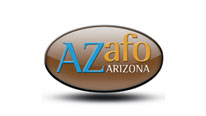Setting the Gold Standard is, well, standard, for Arizona AFO.
“Customers expect our products to be durable, comfortable, and functional,” said company senior executive Don Pierson, CO, CPed, who added that Arizona’s patented, trademarked, leather-covered ankle foot orthosis (AFO) was the first in its category to gain national recognition as an orthosis proven extremely effective in the nonsurgical treatment of posterior tibial tendon dysfunction (PTTD).
Today, if people see a custom-molded ankle foot orthosis (AFO) that incorporates a leather gauntlet over the thermoplastic shell, they often call it an “Arizona,” Pierson said, even though it might not be the authentic Arizona AFO. Arizona AFO and Arizona Brace are registered trademarks of Arizona AFO, Inc.
By being the first patented orthosis in its category the Arizona AFO became the “Gold Standard” that others have followed, Pierson said.
In 2013, the company will release the Arizona AFO Gold Standard Practitioner Program. This program will allow practitioners access to extra benefits when they meet a series of criteria, such as participating in product training, ordering a wider variety of products, and to following its recommended casting techniques. Practitioners can look for program details in the spring.
Pierson joined the 12-year-old Mesa, AZ, lower extremity orthotics research, development, and fabrication business nine years ago. He began his career in Illinois as an orthotic technician, then became an orthotic fitter, a certified pedorthist, and, finally, a certified orthotist.
The company maintains that product education is key to the practitioner’s success that leads to the patient’s satisfaction, and that knowing which style brace works best for a specific indication, as well as available options, is a great asset for practitioners. The company is committed to educating practitioners in this manner, which is all part of what makes Arizona AFO the gold standard in this industry, said Pierson.
In the first quarter of 2013, practitioners, referral sources, and patients will have access to an e-book for the iPad with interactive information, including videos on Arizona AFO products, human anatomy, and indications for AFOs, Pierson said.
Arizona AFO will submit the e-book to Apple this month and it is expected to be available for download through the iBooks app at the Apple Bookstore in the first quarter of 2013.
The e-book’s sections are accompanied by videos, interactive charts and glossy text, slideshows, and 3D models of the foot for practitioners to use for patient education, Pierson said. The e-book will also include PowerPoint presentations, as well as other interactive tools. Updated versions will continually be released with additional chapters and content.
In addition, the company will introduce its custom foot orthotics program, including the ScanCast 3D laser scanner system, in 2013. A laser is used to scan the foot, Pierson said, and from that scan, both functional and accommodative foot orthoses may be fabricated.
The laser scanner may be placed in the practitioner’s office at no charge, as long as the practitioner meets certain guidelines.
Since 2010, Arizona AFO has posted YouTube videos on new products, casting techniques, and testimonials. More videos will be posted in 2013. Additional seminars will be available in 2013 that include hands-on opportunities to enhance the experience, Pierson said.
Part of its expansive education efforts will highlight differences between leather and synthetic coverings, Pierson said, both of which are now offered by Arizona AFO.
“Leather offers more of a secure intimate fit, and is easier on the skin. It may help prevent skin breakdown, which is common with plastic or rigid unlined AFOs,” he said.
The company introduced a synthetic covered AFO called the AZ Breeze in 2011 with patients in mind who may work in wet environments or who just like to walk on the beach, surf, or kayak, for example, and were prevented from doing so while wearing a leather brace, Pierson said. Because this synthetic covered brace may be cleaned in the washing machine, the AZ Breeze also is a better choice for patients who are incontinent or have skin issues that require the brace to be cleaned with water, Pierson said.
Arizona AFO introduced the Moore Balance Brace (MBB) in 2010. It is a lightweight and low-profile orthosis that is garnering positive feedback, Pierson said. It’s specifically targeted to be one part of a fall prevention program.
The MBB was developed in collaboration with Jonathan Moore, DPM, of Cumberland Foot and Ankle Centers of Kentucky, and has proven to be a valuable part of his fall prevention program. Research being conducted on the MBB by the Center for Lower Extremity Ambulatory Research (CLEAR), Rosalind Franklin Institute of Medicine and Science, in North Chicago is expected to be published in 2013.
Interventions to reduce the risk of falls can help reduce costs associated with hip fractures and other fall-related injuries in seniors, Pierson said. “Fall prevention programs are increasingly on the radar, so to speak, in the healthcare industry. Once again Arizona AFO, Inc is leading the way for practitioners with the development of the MBB.”
Andria Segedy is a freelance medical writer in Huntsville, AL.









